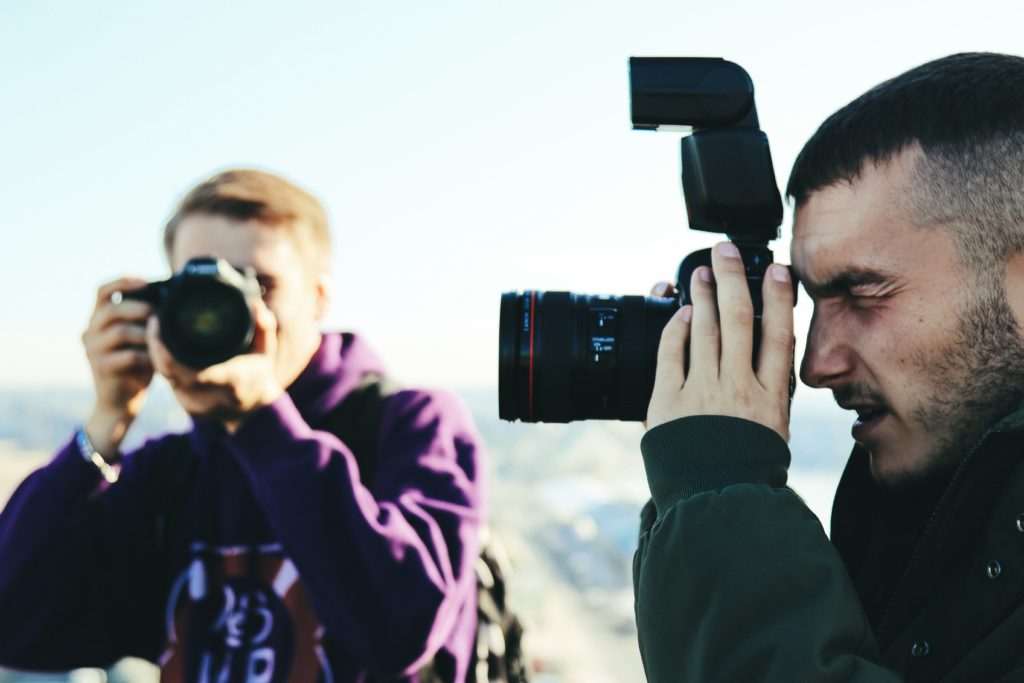When was the last time you actually took the time to learn some basics about composition? I mean, aside from understanding light it's most certainly one of the fundamentals you NEED to understand as a photographer.
After all, what's the point in a clear and sharp image, a great depth of field, or that perfectly-timed candid shot if your composition is way off?
You want to utilize the frame to produce a shot you can be really proud of, right?
That is exactly why we've compiled these tips, to ensure you're really taking the time to think about your photographic composition and plan your framing before you click the shutter…

Learning Some Composition Tips and Tricks
Composition and light are the basis of photography and composition simply means
“The act of putting things together (mostly related subjects), to bring out a creative and meaningful piece of work or art.”
This term does not apply only to photography, but also to music, dance, literature and any other kind of art.
In basic composition, objects/subjects are moved around and placed in such a way that they create a pleasing frame.
This applies to still photography or portraits (pre-visualisation and timing are involved when lighting is concerned), but when it comes to street photography, you need to wait till you get the subjects in frame in the desired positions (anticipation, pre-visualization and timing are all involved as there are great moments waiting to be captured and they exist for only a few seconds or maybe even a fraction of a second).

3 Quick Tips to Start Things Off
- Learn to pre-visualize – Identify the scene, the story behind the scene and the focal point/subject; this makes you stand out from other photographers out there!
- Anticipate – Wait for the right moment, expecting for the moment to take place; it can happen anytime
- Timing – Be ready to capture the moment as it can slip away in a fraction of a second. Good examples are street, wildlife, actions, and sports.
Composition is also a way of guiding the viewer’s eye towards an important subject or a series of elements in the frame, in a particular order.
So a good composition helps make a masterpiece out of the dullest subjects and a bad composition can ruin a photograph despite very interesting subjects in the frame.

How do you Compose a Good Photograph?
There are many rules that can be followed or broken to create a great photograph. Let's focus on these three points today!
1. Creating Depth in a Photograph
We all know that a photograph is a two-dimensional medium and in order for the viewer to feel the depth in the images, it is necessary to create it using the objects or elements in the photograph. One way to do that would be to include a foreground, a middle ground and a background.
Overlapping patterns or structures can also create a sense of depth drawing the human eye to recognize and separate these layers thereby creating a sense of depth.

2. Including Leading Lines
To keep viewers hooked on to an image, the photographer needs to frame the image in such a way that it looks interesting and draws their attention.
In order to achieve that, you can use converging lines (give a feeling of a different perspective) or curved lines and zig-zag lines (take you through a journey around the image), straight lines (lead you straight to the subject) or any other form of lines to draw the viewer’s attention and to lead them to the main subject using these lines.
These lines can also be in the form of walls, fences, roads or even power lines that lead the viewer to the subject. So it's always best to look around and see when you're pre-visualizing, whether or not there are any lines to help you – think subtlety too.

3. Include Symmetry and Patterns in the Frame
These are one of the most eye-catching effects one can include in a photograph to compose a beautiful photograph. Patterns and textures are everywhere, be it natural or manmade! These along with or without symmetry can contribute to great compositions and draw the viewers’ attention.
When it comes to symmetry, you either include it or break it in some way so that you can add a focal point in the image.
You may have known about the rule of thirds where you are asked not to place the subject in the center of the frame, but when it comes to using symmetry, break this rule and place the subject in the middle as these work really well for symmetrical scenes.

Further Resources
- These 6 Essential Composition Skills Can Turn You Into a Really Good Photographer by Karlo de Leon
- 7 Composition Tips That Will Skyrocket Your Landscape Photography by Lightstalking
- Converging Parallels – A Powerful Composition Tool by Jason Row
- Easy Exercises You Can Do To Improve Your Eye For Composition by Tiffany Mueller
- Improve Your Photography Composition: 5 Free E-Books to Inspire Your Vision And Creativity by Ritesh Saini
Further Learning
To make sense of all these ideas and put them into practice, be sure to have a look at this professional guide on Advanced Composition – it really is a fantastic guide that could propel your photography skills beyond the limits you thought possible!




